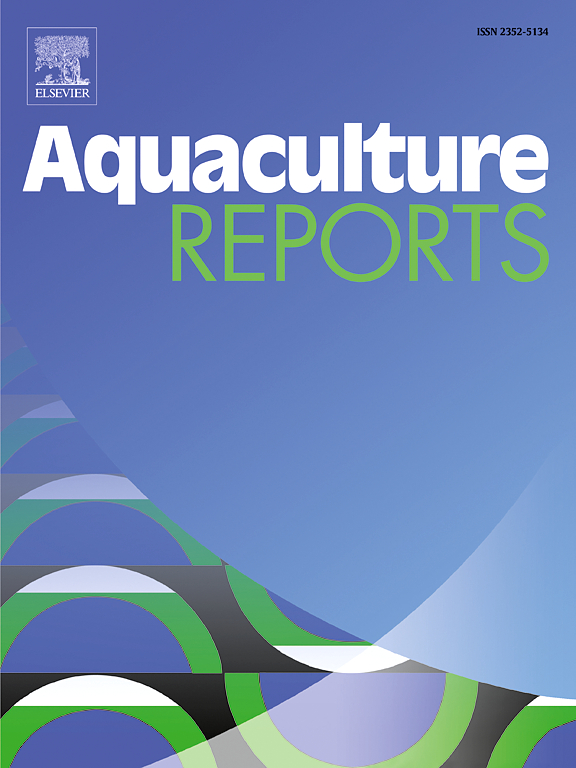Comparative analysis of the intestinal flora of Siniperca chuatsi at different growth stages under three feeding practices
IF 3.2
2区 农林科学
Q1 FISHERIES
引用次数: 0
Abstract
The intestinal flora plays a key role in digestion and nutrient absorption, and its composition in fish can vary depending on feeding practices and growth stages. Siniperca chuatsi feeds on live bait throughout its life, and preliminary developments have been made for compound feed as an alternative to live bait in aquaculture. We investigated changes in the intestinal flora of S. chuatsi under three different feeding practices (live bait, compound feed, and mixed diet) at different growth stages by 16S rRNA sequencing. A total of 4,220,390 valid sequences were obtained, clustered into 9103 ASVs. The intestinal flora of S. chuatsi was dominated by Pseudomonadota, Firmicutes, and Bacteroidota. With growth, the α-diversity of the intestinal flora in the live bait group and mixed diet group significantly decreased (p < 0.05), while the α-diversity in the compound feed group did not change significantly (p > 0.05). There were no significant differences in α-diversity among the feeding practices at either one month or two months of age (p > 0.05). At three months of age, the α-diversity was significantly higher in the compound feed group compared to the mixed diet group or live bait group (p < 0.05). Functional prediction revealed that the carbohydrate metabolism pathway was most enriched in the compound feed group, while the amino acid metabolism pathway was most enriched in the live bait group. In the mixed diet group, both the amino acid metabolism and carbohydrate metabolism pathways were similarly enriched. A relatively high number of marker genera were observed in the compound feed group, of which Stenotrophomonas and Cetobacterium are potentially valuable in the application of feed additives for S. chuatsi. This study provides insights into the adaptation mechanisms of intestinal flora to compound feed, supporting diet domestication and the optimization of compound feed formulation for S. chuatsi.
求助全文
约1分钟内获得全文
求助全文
来源期刊

Aquaculture Reports
Agricultural and Biological Sciences-Animal Science and Zoology
CiteScore
5.90
自引率
8.10%
发文量
469
审稿时长
77 days
期刊介绍:
Aquaculture Reports will publish original research papers and reviews documenting outstanding science with a regional context and focus, answering the need for high quality information on novel species, systems and regions in emerging areas of aquaculture research and development, such as integrated multi-trophic aquaculture, urban aquaculture, ornamental, unfed aquaculture, offshore aquaculture and others. Papers having industry research as priority and encompassing product development research or current industry practice are encouraged.
 求助内容:
求助内容: 应助结果提醒方式:
应助结果提醒方式:


